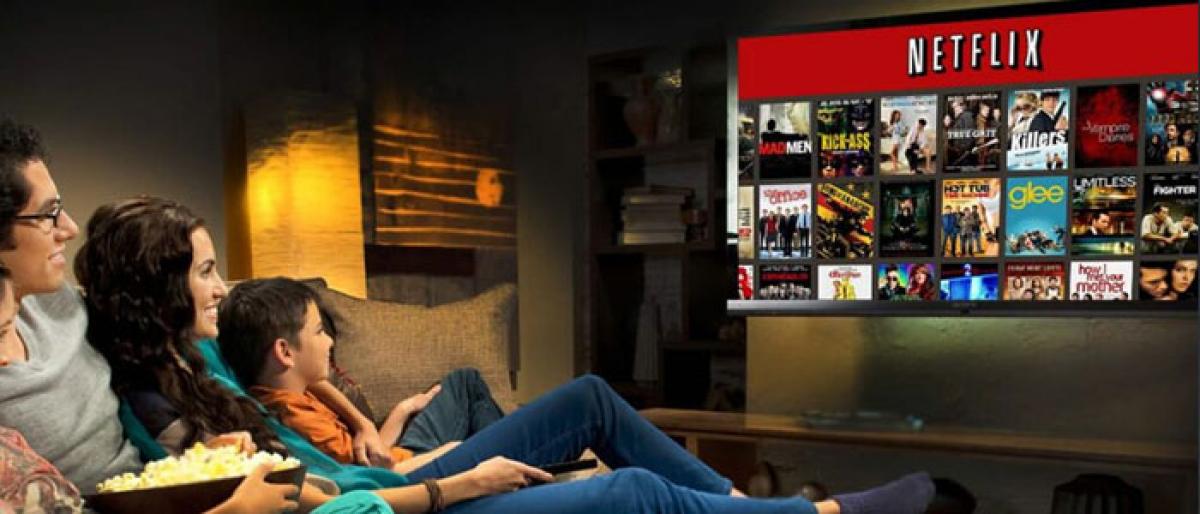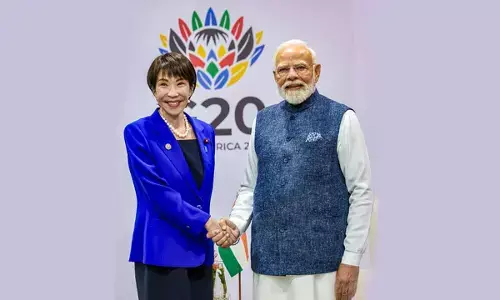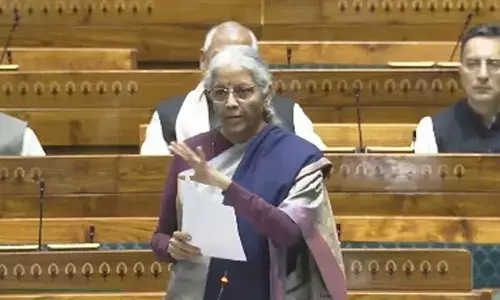Enmeshed in the web,worldwide

Indias first web series offering from international top gun Netflix Sacred Games premiered in 190 countries on July 6 It was definitely not a breakthrough as far as the acceptance of web series webisodes as Wikipedia defines material is concerned as India has already more than three dozen Hinglish web series producers, big and small, coming on them for over a decade, as of now
India’s first web series offering from international top gun Netflix – ‘Sacred Games’ - premiered in 190 countries on July 6. It was definitely not a breakthrough as far as the acceptance of web series (webisodes as Wikipedia defines) material is concerned as India has already more than three dozen Hinglish web series producers, big and small, coming on them for over a decade, as of now.
Then, there are the early birds in the southern languages who have branched off on to cyberspace with their offerings (see box), also interspersed with small and little-known production houses. Of course, globally, the shift into this digital platform has been felt rapidly as one more medium rose up for the movie Moghuls to exploit and enslave.
Yet, as far as ‘Sacred Games’ went, the star attractions being Saif Ali Khan, making his debut in this format for the first time and the top-notch performers like Nawazuddin Siddiqui, Radhika Apte, etc made it quite a keenly expected one.
Nearly two weeks it premiered and gained traction owing to the directors helming it – Vikramaditya Motwane and Anurag Kashyap, they of the young brat brigade in Hindi cinema – it has had a tumultuous existence in public memory. The graphic frontal nudity and coarse language of the stars, essaying their roles in an underworld milieu surely make it a late night, private kind of a watch for many adults even.
The critical, no-holds-barred references to politics of the earlier era (when Congress was in power and Rajiv Gandhi as PM) and names being taken, and reputations ripped apart has had its echoes in social media and elsewhere. Suddenly, freedom of expression and a ‘No Censor’ independence for these maverick directors threatened to come unstuck, but only just. With the High Court absolving the actors who were accused of irreverence, saying that they are not responsible for the dialogues spoken, made the radicals breathe sighs of relief.
Earlier, keeping in view with girl power exploding from all corners of commercial Hindi cinema, there was another release ‘Lust Stories’ in the month of June. With female sexuality out in the open (no pun intended) and bold statements made to explain the need for such colourful depictions, this series too put together by marquee names like Karan Johar, Zoya Akhtar, Dibakar Banerjee and Anurag Kashyap kept the media pressure going in its favour.
With bold scenes involving Neha Dhupia and Kiara Advani, indulging in self-pleasure to satiate their unrequited desires, it left behind episodes which varied in quality and watchability. The feeling of being self-conscious or pretentious as women handled the emotional upheavals of their liaisons, marred a couple of them for sure.
Loaded with has-beens like Sanjay Kapoor and Manisha Koirala on one end and the rapidly successful Vicky Kaushal on the other, the web series made its dent in the new market that was shaping up with bandwidths and techno dependence increasing by the day.
Technology and entertainment on a mass scale have often gone hand in hand. From the point of the former being the facilitator on a quantitative scale as far as reach and distribution are concerned, it can be understood.
However, the same value addition that one sees in an exhibition of digital outputs, be it cinematography or audio and video upgradations to match with the platforms it is shown or screened, that is a recent development to be seen across the world.
From the video cassette revolution of the 1980s to multi-channel, multi-lingual explosion of customised content, India has seen it all in the past four decades. It may have been a laggard, relatively, in the decades gone by, but the second decade of the new millennium has seen its solidly young population consuming anything that is streamed to them over screens of varying sizes – from a laptop to a smartphone.
Statistics solidly support this premise. Chrome Data Analysis & Media recently conducted a research to understand the consumption pattern of web series or online exclusive content.
The survey consisted of the awareness level about the web series, the highest watched web series, content genre people prefer to watch online, etc. The survey was conducted in urban markets among an age group of 16- 44 years, with a sample size of 1,426. It consisted of 55 per cent females and 45 per cent males.
The findings came up with the following results – 65 per cent of the people watched TV along with web series. The popularity of the web series depended on its online ratings, search for specific genre online and popularity of the series among peer groups.
Not surprisingly, business dailies report upon the simultaneous growth in digital technology in leaps and bounds. It is said that 21 per cent of the Indian population accesses the internet daily and 85 per cent of the internet user base spends a quarter of their time on the Net.
According to online media reports, at present web series are not only grabbing viewers’ eyeballs but also coming to the attention of various brands and advertisers to reach out to a right set of audiences. The taste and demands of the new-age viewers are constantly changing, and content providers are exploring new ways to deliver original programmes specific to the digital audiences with over-the-top (OTT) players.
No wonder, when one reads that according to a report on digital advertising by Dentsu Aegis Network, the Indian digital advertising industry, currently pegged at around Rs 8,202 crore, is slated to see a growth at 32 per cent Compounded Annual Growth Rate (CAGR) to reach Rs 18,986 crore by 2020.
The report also forecasts that digital media spends, currently contributing 15 per cent of the total advertising pie, will reach 24 per cent of the entire market by 2020. However, the report predicts that video is expected to see the highest CAGR of 38 per cent and will have a share of 22 per cent by 2020. Spends on display are expected to grow at CAGR of 36 per cent, while social media is expected to grow at 34 per cent CAGR.
What is likely to be watched by many sections of media watchers would be how the new kid in town would keep the novelty factor alive. In sharp contrast to some of the better known and watched web series across the world which take up a wide range of topics and issues (this writer had the experience of binge-watching a Jewish serial ‘Fauda’, which spoke evocatively on the Palestine issue, a surprise hit globally), Indian web series producers and directors are yet to break free from the brazenly commercial formula fare, in a scale and level, which is more in-your-face than the filmi versions they come up with.
As Karan Anshuman, the director of ‘Inside Edge’ (2017), says in a recent media interaction: “The platform was incidental, so it wasn’t a massive shift. The primary constraint is time. Better planning, less indulgence, and more onus on the actors is the order of the day as compared to films.
He also adds: “As long as these digital platforms are open to fresh ideas and less dependent on legacy, formula, and big names—the content from India is set to pole vault into a world-class league.














